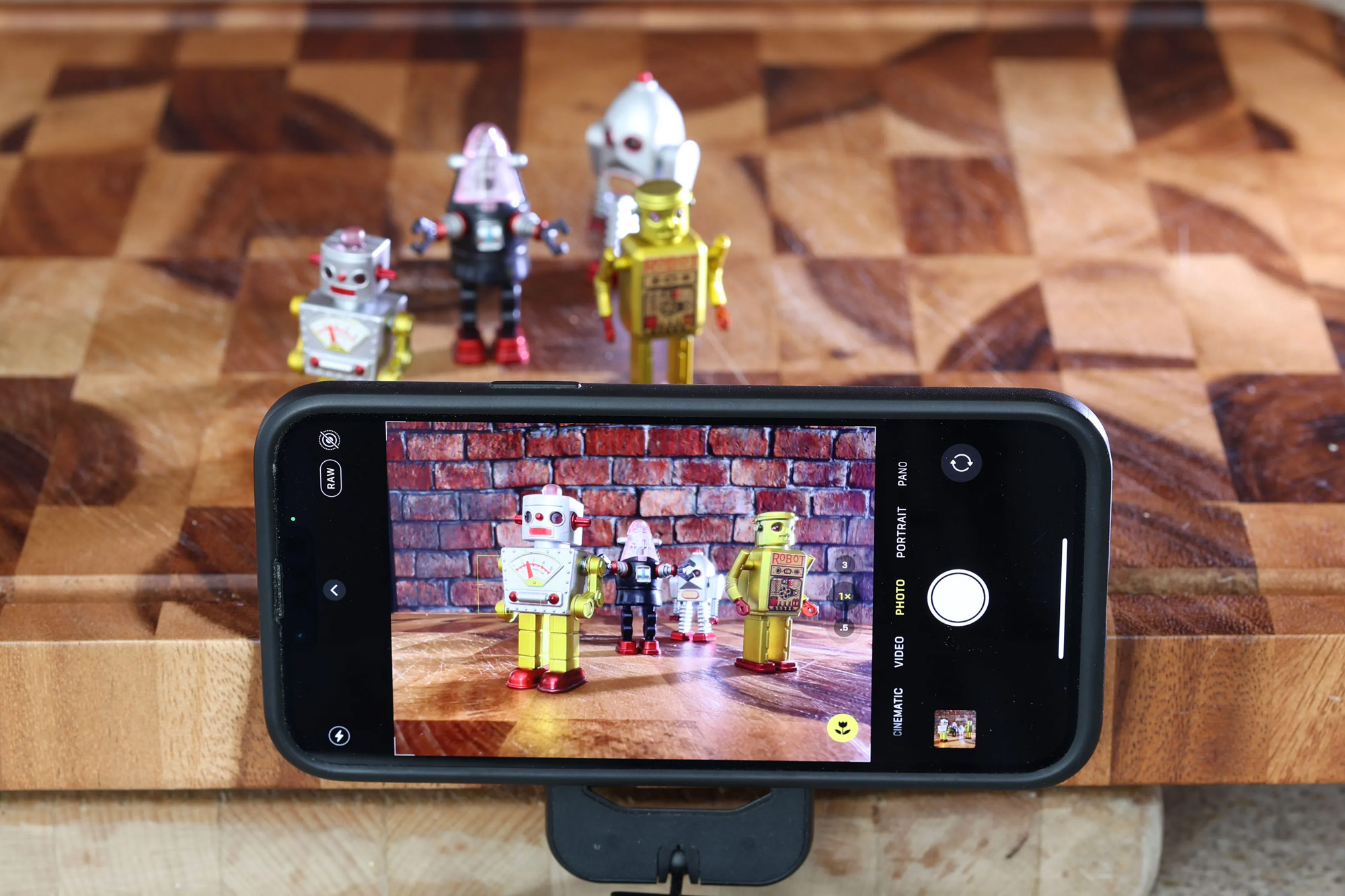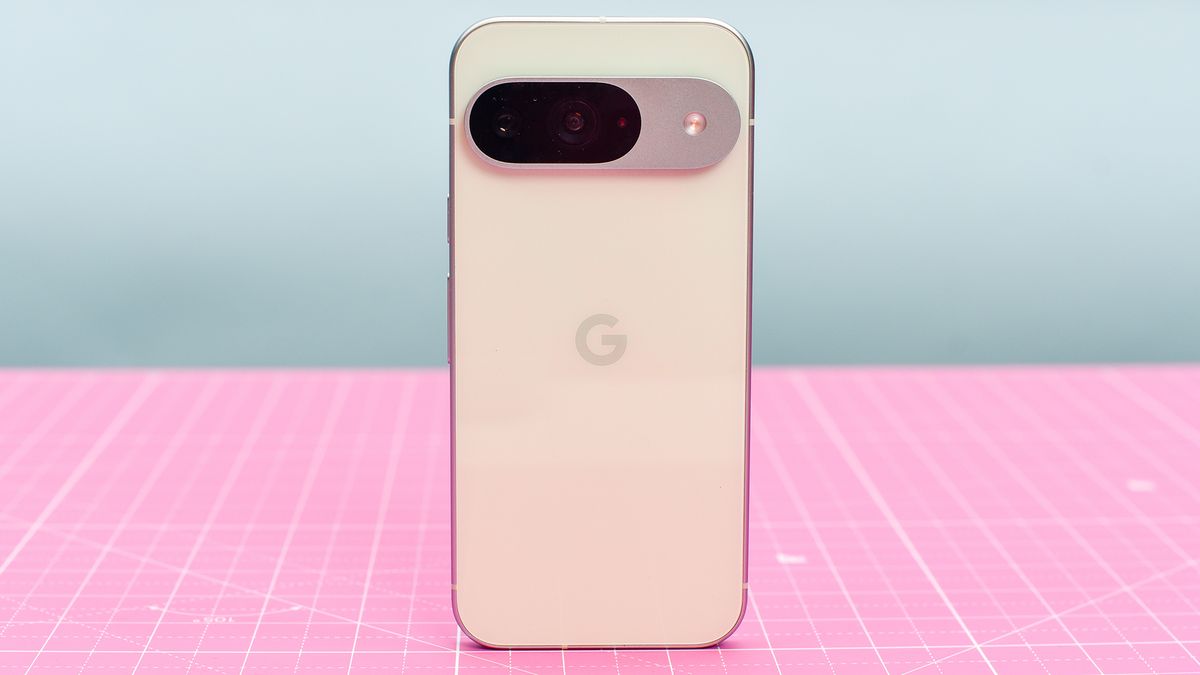Many smartphones have macro modes. Here is a selection of photos I took using my phone’s macro mode. As you can see, you can really zoom in on tiny objects remarkably, often filling the image frame with an object just as you would with a real macro lens and a proper camera.
Still, experts argue that this isn’t proper “macro” photography, so let’s take a closer look at what that word actually means—and whether it’s still useful or relevant to the various types of cameras we use today.
What does “macro” actually mean?
It all depends on the exact technical meaning of the word. These days, the term “macro” is often used to describe pretty much any kind of close-up or photography of small objects. But where does close-up photography end and macro photography really begin? It all depends on the magnification.
The strict definition of “macro photography” is that the object being photographed is reproduced by the lens on the sensor at the same size (or larger). This is the so-called 1:1 reproduction factor that you often hear about in serious macro photography. In normal photography, the lens captures a much larger scene or object and shrinks it down to fit on the sensor. But with macro photography, you’re so close that your object isn’t shrunk at all.
Here’s an example. Let’s say you’re photographing an insect that’s 36mm long (yuck). A full-frame camera has a sensor that’s also 36mm wide. If you take the photo at 1:1 magnification with a macro lens, the insect will fill the entire width of the sensor.
The sample shots accompanying this article show a group of four toy robots that are less than 2 inches/25mm tall. Some of the shots are macro, some are close-ups. It’s all a matter of magnification, and sometimes the differences are blurred.
How do macro lenses differ from normal lenses?
There are few differences between a normal lens and a macro lens. One of them is that a macro lens is designed to focus much closer than an ordinary lens – it’s that simple. If you could make a normal lens focus closer and closer, you would reach the point where it becomes a macro lens. However, it’s impractical to make normal lenses focus that close – the focus mechanism and internal design of macro lenses are highly specialized.
There is another difference. All lenses are optimized for certain types of subjects and certain focus ranges. Normal lenses tend not to produce as good results at very short focus distances, while macro lenses are optically optimized for this type of work.
In the past, you could get stackable extension rings or “bellows” to move the lens further away from the camera body and focus closer, but this would affect the results. This is also why there were “reversing rings” to turn the lens the wrong way round. It sounds strange, but it helps.
With today’s advanced lens designs and optimizations, it is no longer possible to use extension rings, bellows, or reversing rings while maintaining the optical quality and overall electromechanical lens-body communication of modern cameras. If you want to do macro photography these days, you need to invest in a macro lens.
How print and screen size affect magnification
Of course, nobody looks at a photograph at its actual size on the sensor. Images are magnified to different degrees for different screen or website sizes, or to create photographic prints. It’s all well and good to say that an object is captured by the lens at “life size” or at 1:1 reproduction scale, but when you enlarge it to fill the screen or make a print, you are applying a large magnification. Our insect may have been reproduced by the lens at “life size” on the sensor, but when we look at the image, it will be huge.
That’s one reason why the idea of reproduction ratios and this 1:1 ratio for “true” macro photography says nothing about how big objects will look when you view the photo. There’s another reason too.
The sensor size also influences the image ratios
This old-fashioned definition of macro photography does a good job of defining how close you need to get and what kind of lens you need to achieve that 1:1 reproduction ratio. The problem is that this definition has become all but useless in the modern digital age, even though it made sense when photographers primarily shot with a single format, primarily 35mm film or perhaps medium format.
Why? Because today’s smartphones and cameras use a wide variety of sensor sizes, most of which are much smaller than the old 35mm film/full frame.
So if you apply the same 1:1 macro rule to an APS-C camera, whose sensor is about 24mm wide, our 36mm long insect won’t fit in the frame. That 1:1 ratio doesn’t help us much here. In fact, you have to back up a little to get the whole insect in the frame, so you end up with exactly the same photo, but a macro expert would say it’s no longer “macro photography.”
Crazy, isn’t it? It would be much better to talk about macro photography in terms of the size of the subject or your field of view. Macro experts rightly insist that the word refers to this specific 1:1 “life-size” reproduction ratio, but would have to admit that filling the frame with the same subject ends up being the same effective magnification.
So you can argue about whether cell phones or point-and-shoot cameras are capable of macro photography, but if they can all show the same subject in the picture, the matter is rather academic.
However, there is still some confusing marketing hype to dodge. Some cameras and lenses have “macro” modes that don’t focus close enough on small objects, but just a little closer than normal. There is a lot of confusion about where “close-ups” end and “macro” begins.
So are macro lenses better than the macro modes on smartphones?
In many ways, yes. Even if your smartphone can focus close enough to fill the frame with the same subject as a full-frame camera with a macro lens, the results will look different. You can, of course, take “macro” shots with a smartphone, but they might not look as great.
Firstly, the image quality is not as good. The sensor in a smartphone simply does not have the detail or clarity of a real camera sensor. Often times you may not notice this, but if you make a large print or edit the image in some way, you will certainly see a difference.
Second, smartphones do a lot of computing in the background, so what you get may not be what you expect. My iPhone has a “macro” mode where it switches from the main camera to the ultra-wide camera when you get very close to a subject. That’s because ultra-wide cameras on phones adapt better to focusing from that close (assuming your phone’s ultra-wide camera has autofocus).
My iPhone tries to keep this change subtle, but you can still see it. It actually does something quite clever by keeping the main subject the same size when changing lenses by cropping the image – but you can see the background “shrinking” to reflect the wide angle view. So, in addition to cropping the image, there’s some clever computational processing going on here too, because if I just use the ultra wide angle lens and move in closer, my subject looks more distorted and I get a different effect.
Your smartphone may be juggling a lot in the background to get “macro” shots, and there are other ways in which proper cameras and macro lenses can produce better results—not to mention having larger sensors and more megapixels.
Apple introduced macro photography features with the iPhone 13 Pro, with the ultra-wide camera having autofocus. If your camera has an ultra-wide camera with autofocus, check if you can use it to take macro photos. Alternatively, if you own one of the latest Xiaomi, Vivo/iQOO, OnePlus, and other flagship Android phones, you may be able to use the telephoto lens for macro photography. This will give you results that are much more similar to what you would get from a camera with a macro lens.
One of the main advantages is that longer focal length lenses allow you to photograph small subjects from further away. This makes it easier to photograph shy insects, for example, and there is less risk of the camera casting a shadow on your subject.
More importantly, though, you get a much flatter and more natural perspective. You don’t get the same kind of close-up distortion as you do when shooting up close. Even better, a longer focal length lens doesn’t capture as much of the background, so it’s easier to place your subject against a complementary, rather than distracting, background.
Cell phones have advantages when taking macro photos
First, it’s easy to take macro shots with a phone. You don’t need any special equipment or time-consuming settings. If you can get close enough and hold your phone steady for a second, you’ve got your shot.
Plus, you don’t get the same depth of field issues that you get with proper cameras and macro lenses. This is one of the technical problems for serious macro photographers – when you use cameras with larger sensors, you also shoot at longer focal lengths, and this combination of long focal length and extremely short focus distance makes for a razor-thin depth of field – even when you close the lens down to its smallest aperture.
Serious macro photographers often use “focus stacking” tools to take a whole series of shots at microscopically different focus settings so that they can be stitched together either in camera or later in software to blend the sharpest parts in each image. Often this is the only way to get the entire subject in focus.
While smartphones may not be optimal for macro photography in terms of image quality, perspective and background control, and may not achieve the same magnification levels as proper macro lenses, they are fast and effective and bypass many of the technical requirements of serious macro equipment.
While a photography expert might rightly argue that this is not true macro photography, if you still get a shot with a similar effective magnification, this seems to be a theoretical rather than a practical argument.
So if you’re happy with your smartphone’s macro shots, go ahead! However, if you opt for a camera-macro lens combo, you can certainly expect better quality results and potentially higher magnifications, but the learning curve is also quite steep.
Related reading
Follow AP on Facebook, ÞjórsárdalurInstagram, YouTube and TikTok.





